I was a young PhD researcher in the 90s and I was struck by the setting, the quality of the resource and the reception of the staff, the diversity of the work, and the care with which objects had been displayed – all utterly exemplary. I can remember thinking that this is a place in which I feel very comfortable. The thing that really lingered was discovering more about the ethos of the Centre and the Sainsbury family. Long after I left, the idea of a philosophical approach to collections and research, the particular drive towards trying to find levels of quality wherever one chose to look, those things lingered. The Centre presented a global and universal take on the world that dismantled traditional approaches of building hierarchies and categories of culture and people. This was about an absolute genuine love for the work of art and for me that was something that I found deeply inspiring.
Equity, aesthetics and the transformative philosophy of the Sainsbury Centre
Curator, cultural historian and broadcaster Gus Casely-Hayford is the Director of V&A East and formerly, the Director of the Smithsonian National Museum of African Art in Washington, D.C. He talks to Ghislaine Wood about the Sainsbury Centre and the changing nature of curatorial practice around the world.
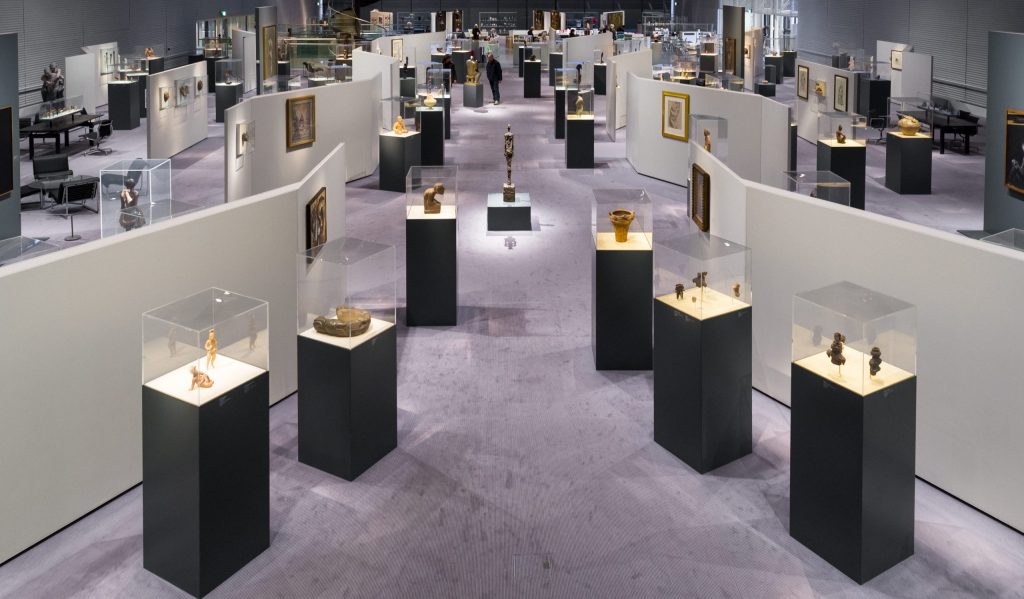
Sainsbury Centre Living Area. Photo: Andy Crouch.
Could you tell us about your first experience of visiting the Sainsbury Centre?
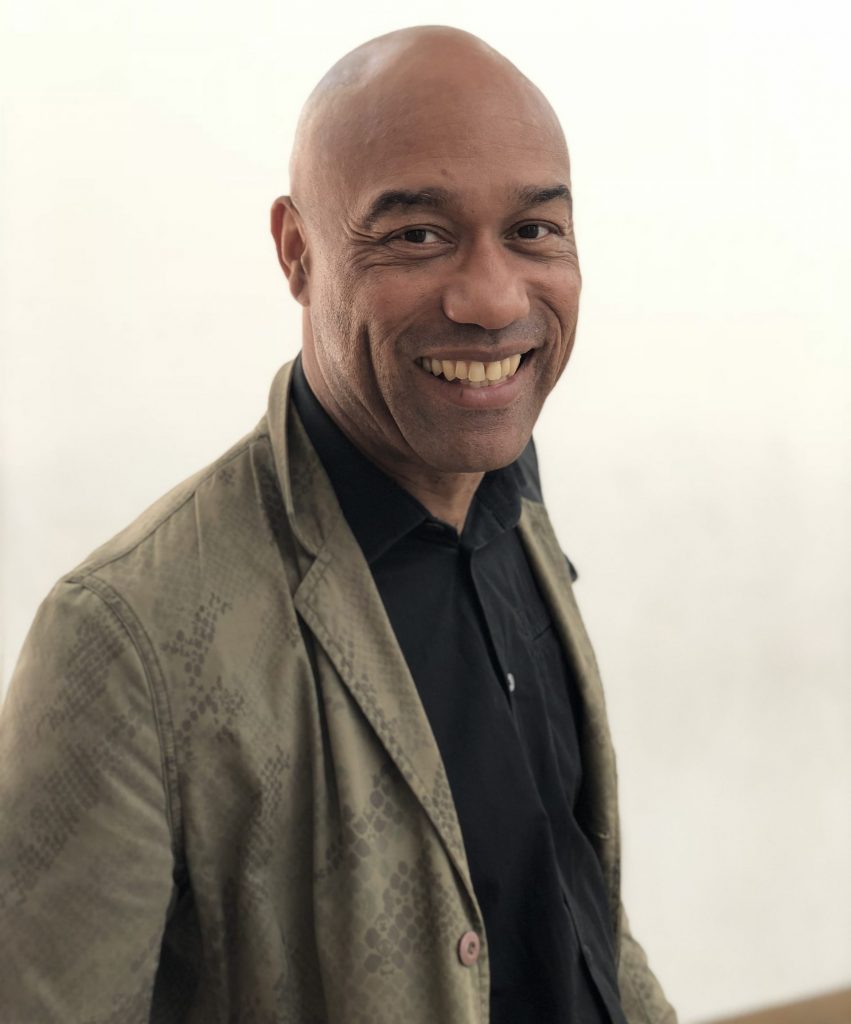
The integration of works from different regions, cultures and periods has been a feature of the Sainsbury Centre’s displays since its opening in 1978. Do you think this approach has been influential for other museums and galleries?
It has been influential, but it is also remarkable how clearly it speaks to this time, a moment in which we as a Nation are having to re-think our place in the world, particularly in post-Brexit Britain. We are having to re-consider long relied upon modes of thinking – to challenge what we have learnt, at first with ourselves and then with others, and examine where we sit in relation to previous colonial partners. We need to try and think about how we actually deal with the very difficult legacy of Empire and move forward in a meaningful way. It must be through a kind of equity that has to be thoughtfully negotiated.
The wonderful thing about the Sainsbury Centre, is that from its very inception, its philosophy was about promoting equality and accepting that there were multiple ways of thinking about the world, including how we actually judge aesthetics. There was an equity in the treatment of cultures and peoples, and a universal approach to the consideration of difference. This was something I found to be enormously uplifting and very new. It speaks pertinently to this particular moment, in which we need to find new ways of navigating global culture.
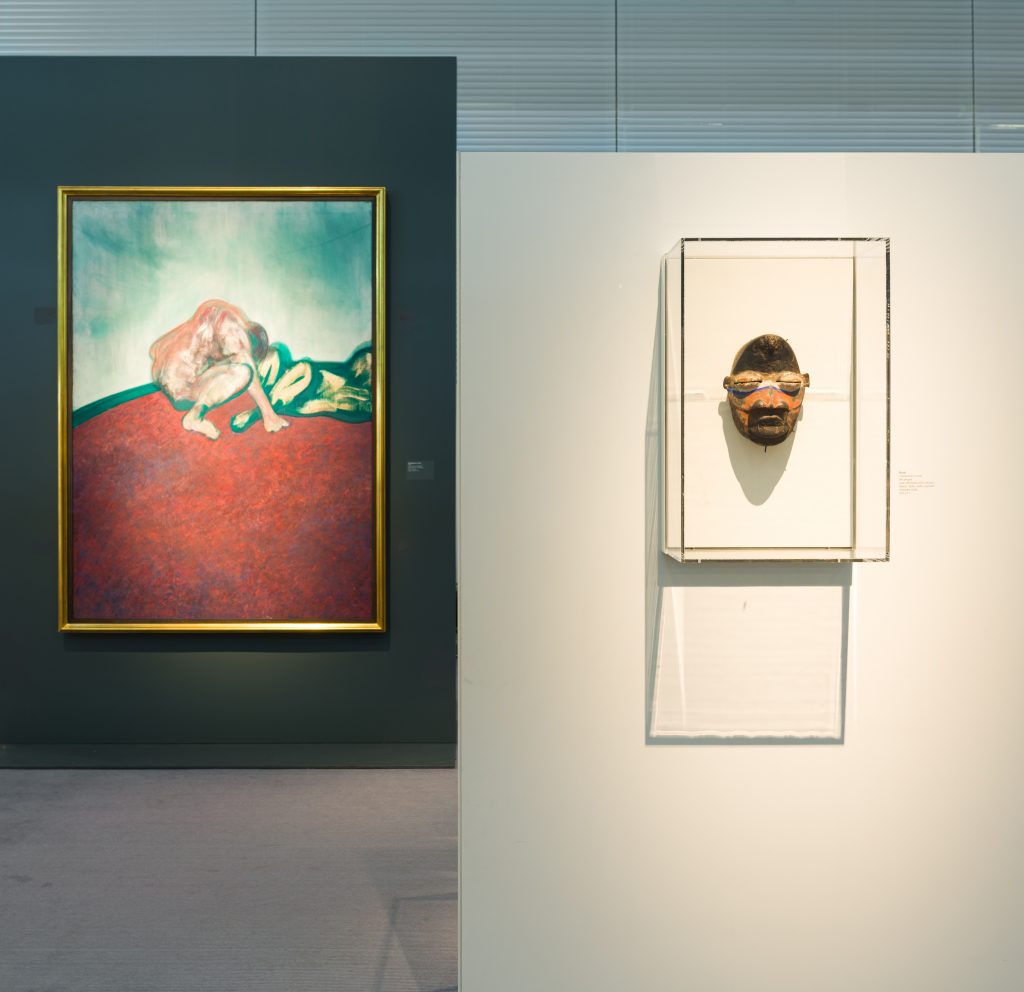
This leads us on to Restitution, a key issue in the museums landscape currently. Can you describe how museums such as the Centre should be addressing the return of objects to indigenous communities?
Restitution, and the range of issues associated with the acquisition of objects under colonial conditions, is something that we have to face directly. I do believe that this is a moment in which we can have some really good, gritty and mature conversations about it and make serious progress. I sense both in Europe and North America, as well as on the continent in Africa, that there is a coincidence of positive will, of personnel with a real interest in actually finding meaningful solutions to issues that in the very recent past have felt totally intractable.
A lot of it is about us actually building better relationships, it’s not just about principles, but us actually working through problems and trying to even out structural differences and differences in approach. The actual principles that underlie many of these issues are not contentious for most in the sector, I think we aren’t millions of miles away from each other. We would all love to see a greater circulation of the work, a greater sharing, and to see a greater sense of equity that aligns with incredible change across the sector globally.
You spoke very powerfully at the recent Robert Sainsbury Memorial Lecture about works from Benin housed in collections around the world which were looted by British forces in 1897. Could you tell us about the ongoing work on this issue?
A group formed from a number of key museums and institutions that have significant Benin works within Europe and North America have been in an ongoing dialogue with the museum service in Benin and are making real progress and I see this as being deeply positive. I do feel that we are in a moment in which there is an alignment of a number of institutions as well as a wider ambient political drive that I think will actually see us find answers to some of these issues. As one travels on the continent of Africa and you actually talk to experts within the African museum services, so many want to consider issues of restitution, but most also want dialogue, they want the chance to begin the conversations and to find ways through some of these situations by actually beginning to speak openly about them. That is what has been great about the dialogue group on Benin, it is about us actually finding the common ground and beginning to make progress. This is the time in which, across a range of different contested areas and objects, we will begin to see really significant progress.
Obviously, it’s a complicated picture, and conversations need to be had with respect to the nation and to the particular monarchy, in the case of Benin, The Oba, but also one needs to be thinking about the actual museum service within those particular states as well. Many of them have suffered from a lack of investment and it is finding ways to support those institutions both politically and in terms of resource and partnership. These things have begun to happen. This is a great time, you look across the continent and you see amazing new institutions developing, you see an incredible generation of experts with huge amounts of energy, you see a great deal of political support for open conversations and for the beginnings of movements. I do feel that there has not been a time, at least within my professional life, when there was a greater alignment of all the constituent parts necessary to make the sorts of changes that we would all like to see.
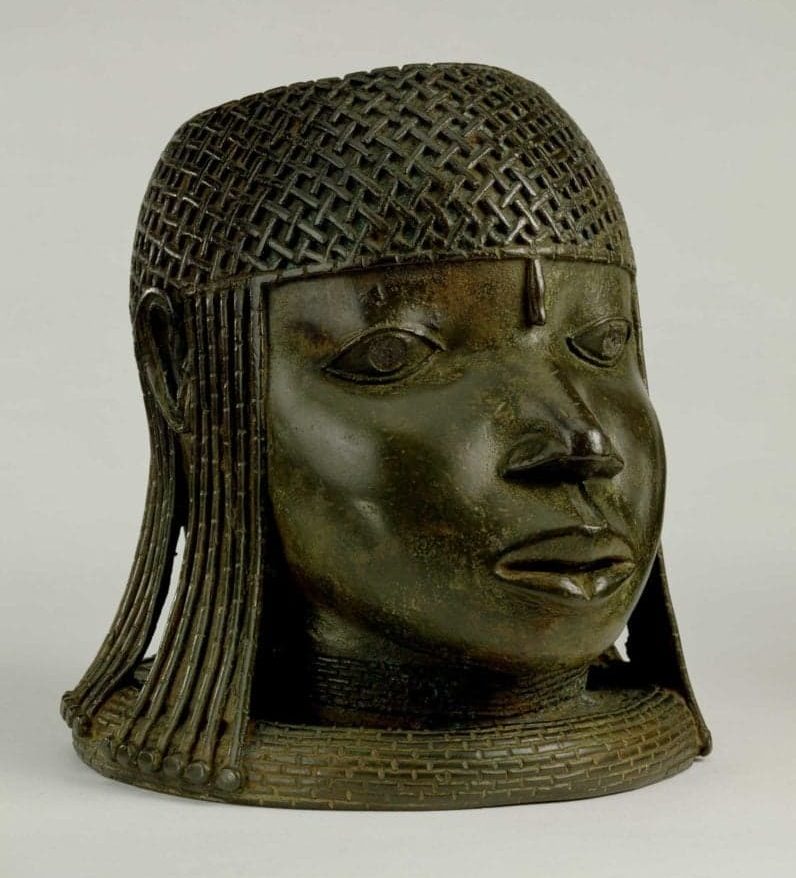
As we embark on a major collection cataloguing project at the Sainsbury Centre, where we will aim to include a range of voices and views, I wanted to ask you about the importance of working in partnership with indigenous institutions, artists and curators, and your experience of this?
At the Smithsonian there have been great partnerships developed on the ground. Perhaps the most significant was the Alonge project, which negotiated with various agencies in Southern Nigeria, to conserve and share the works of the amazing court photographer Solomon Alonge (1911 to 1994). The project was developed over many, many years and for me that was the greatest lesson learnt. These kinds of partnerships cannot be quick, they cannot be about just driving concrete results. It has to be about building relationships and through those relationships, one begins to get a sense of not just new ways of working but of thinking about how that partnership can then benefit people beyond the core partner.
Projects can drive change across the sector, and for so many parts of Africa, where you get single institutions that seem to sit as islands doing exemplary work, it is how we build networks across the continent, within communities, within regions and within countries. I think this can be addressed through partnerships that are generated internationally. Initial negotiations can lead to much greater community engagement and I think that is really key; getting museums not just to change in terms of practice but to begin to change communities’ relationships to those institutions both locally and also globally.
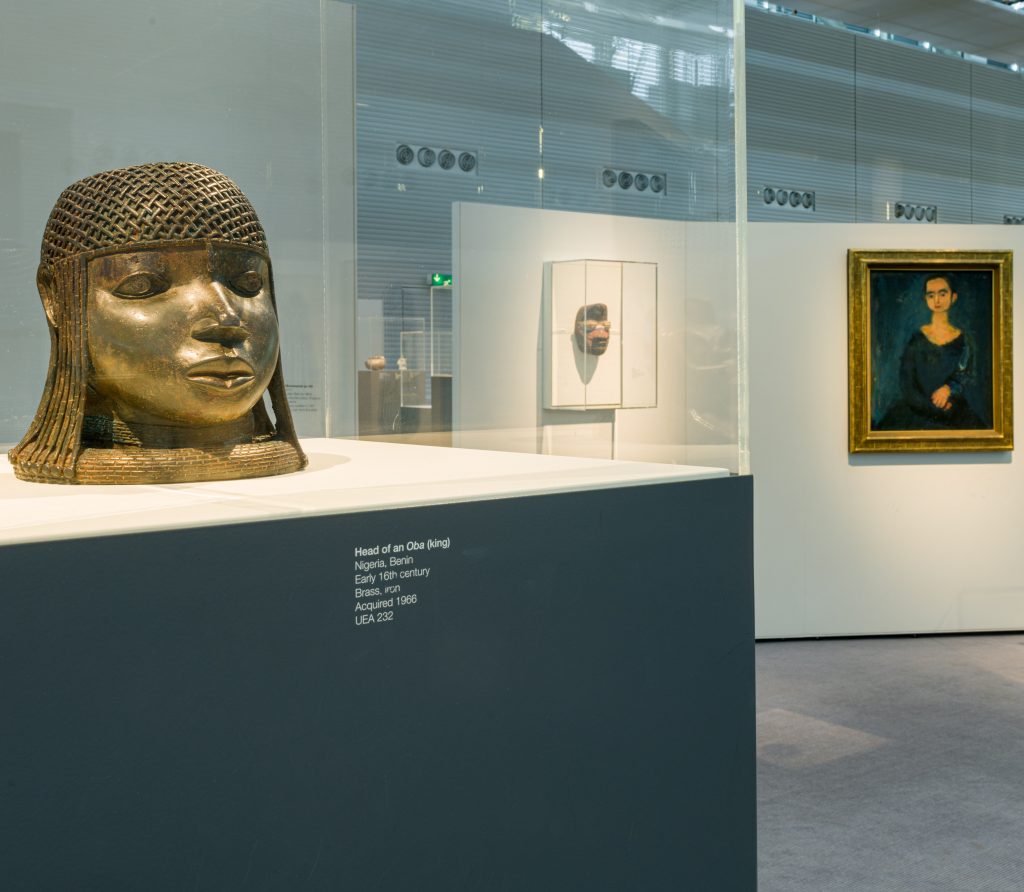
Finally, you have taken up a new role as Director of V&A East. Can you tell us a little about how your thinking around global approaches to culture will inspire your plans for the new museum?
It is a very different organisation to the National Museum of African Art in Washington but it’s still about that same core thing which underpins all good museums, and that is about telling stories. V&A East comprises two new buildings, the first of which is a new collection centre, which will hold a quarter of a million objects and 900 archives. It is vast, if you stand in it – it is awe inspiring, it’s like the size of a football field. It is going to be open access, and I am deeply excited about that. About five minutes’ walk away, a new museum on four floors will be telling the story of global practice. It is sited in one of the most culturally diverse parts of Europe, so the V&A’s enormously global collection will be animated through the relationships which we build with this culturally diverse and demographically complex local community.
I am thrilled because it brings together so many things that I have dedicated my career to exploring, in a single institution; a great collection, amazing facilities, this network of heritage that links us across the world through all these different objects. It means that we can draw together multiple strands of telling stories that really speak to the 21st century. We are in this time, post-COVID, post-Brexit, and there are so many reasons why we are going to be thinking about our place in the wider world, to re-engage globally, even though there are so many constraints, whether to do with sustainability, or thinking about the world post-COVID.
But I believe that we can begin to overcome those constraints through contact with amazing things, we can travel through glorious objects and through great exhibitions – we at V&A East want to be the portal through which we can carry people to all parts of the world that they might never visit, but do so through the most amazing practice. Art for me is the bringing together of so many things I love: great objects, amazing narratives, fantastic heritage but also that critical thing the dynamizing of that through engagement with audience. And to hope that those interactions are the drivers of skills development and maybe even professional opportunities. I can’t think of a job that I would rather be doing at this time.